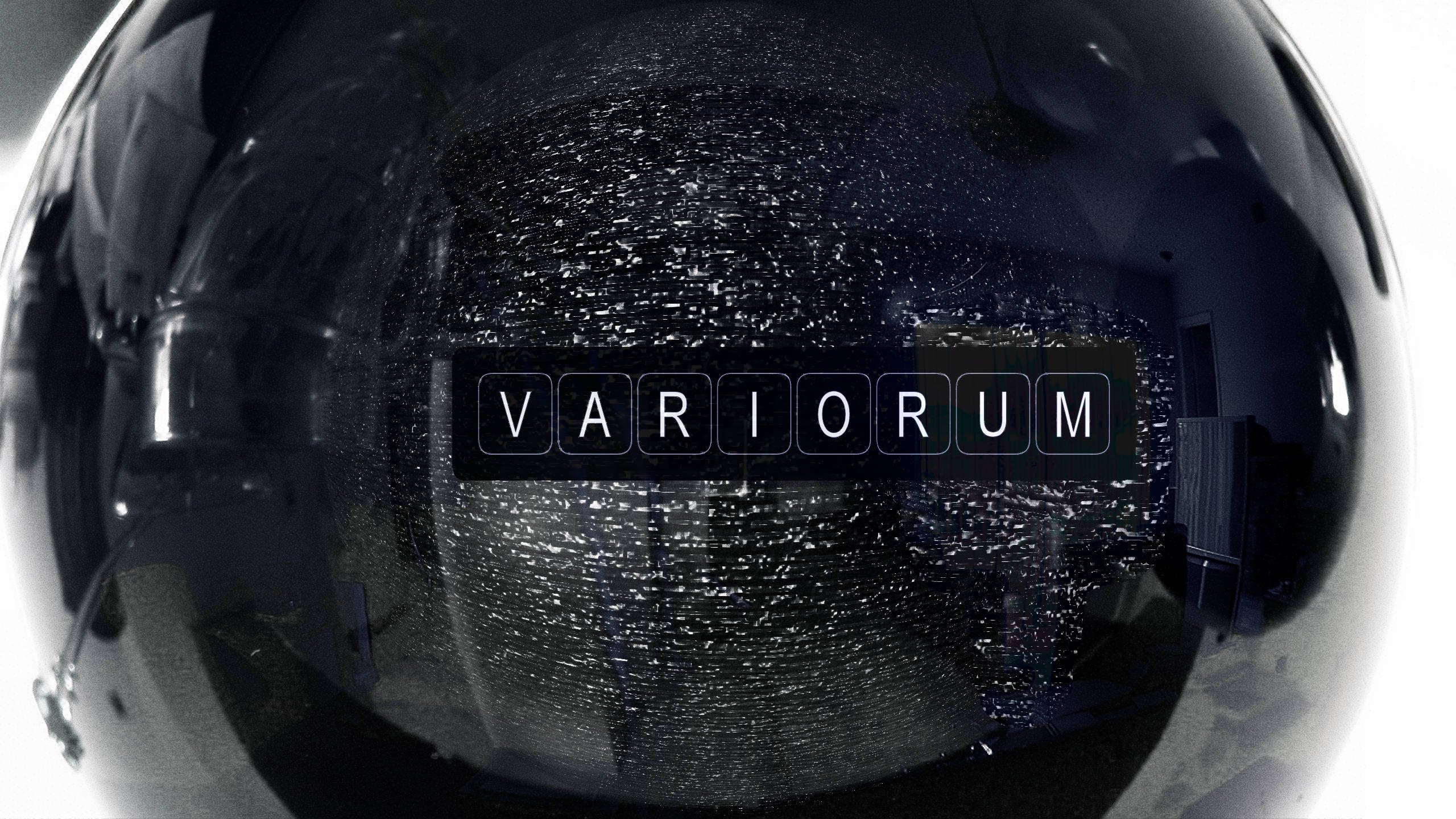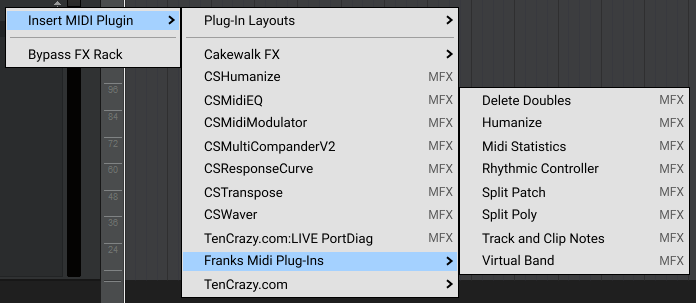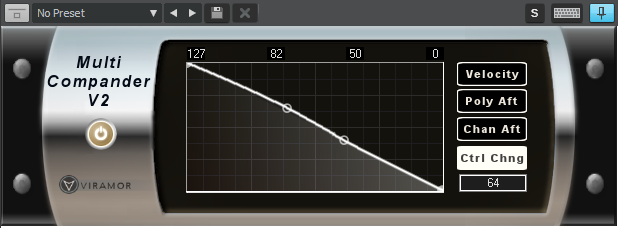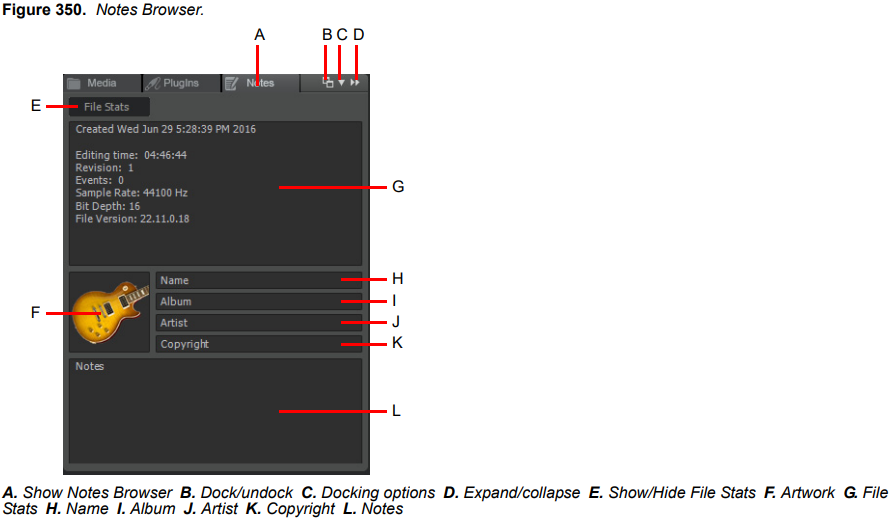-
Posts
283 -
Joined
-
Last visited
-
Days Won
1
Everything posted by Variorum
-

Gobbler (not about Thanksgiving or Turkey, tho)
Variorum replied to kevro2000's topic in Instruments & Effects
Looks like they're gone... Maybe the support email can help. "The Gobbler Marketplace is closed and no longer available. We will return as soon as possible to provide information on how to contact the plug-ins publishers you had subscription(s) with. We sincerely apologize for the suddenness of the closure. Please send an e-mail to "support@gobbler.com" for all your questions." -
Here's another plugin... with a twist. it's a VST3 Midi Effect called VelociRouter. I couldn't do track routing with MidiFX so this is what I came up with. If you've ever wanted to route Midi data to separate tracks depending on the velocity of the note, this is for you! You can adjust the velocity of the notes that are routed using the Velocity Offset knobs. This can be useful for balancing transitions. A paltry set of instructions are on the web site... it's pretty easy to use. Just make sure you pay attention to the part about enabling Midi Echo on all receiving tracks. This is required for all plug-ins that produce Midi data. If you you're having a problem getting it to produce Midi output, double check the VST3 setting Enable MIDI Output. It should be checked by default. As with all the other plug-ins, it comes with a 100% money back guarantee ? Get it here.
-

Frank's MIDI FX not being recognised
Variorum replied to BassMasterGeneral's topic in Cakewalk by BandLab
I'm pretty sure he's talking about these: https://www.midi-plugins.de/ If you downloaded the installer (midiplug_64.exe), just run it and it will register the MidiFX properly. You can specify any directory for the install or just accept the default. You DON'T need to check the box to install the VST plugins, Cakewalk doesn't need them, it uses the DirectX version. When you restart Cakewalk, the plugins will be available here when you want to insert them on a MIDI track : -
Judging by pictures 2 (Fader2 - cc7:volume) and 3 (Fader3 - cc11:expression), the sliders are dirty or the Analog to Digital part of the circuit isn't very good... at least in the upper range (above 100, or so). Seems to be some flutter. Reminds me of the the Pot controllers on the Commodore Vic-20 a few decades ago. It appears to be a hardware issue... I don't think there's anything you can do about it in the DAW. You may want to check all of the faders. The particular CC doesn't matter, just move them up near the top (above 100) while recording and see if they all exhibit that behavior. If so, contact the manufacturer. He may be able to fix it in the firmware by doing some averaging of the A/D samples.
-

SOLVED: Sustain pedal for MIDI controller works in reverse
Variorum replied to Wojtek Stecyszyn's question in Q&A
I suspect it would be possible with ACT... @azslow3 is the resident expert with that. Maybe he can give you a hint. -

SOLVED: Sustain pedal for MIDI controller works in reverse
Variorum replied to Wojtek Stecyszyn's question in Q&A
CSMultiCompanderV2 can be used to reverse the Pedal (CC64) in real-time and playback if you set it up like this: Select Ctrl Chng and type 64 in the box below it. Drag the left node up to 127, drag the right node down to 0. The two nodes in the middle don't matter for this application. Personally, I'd go for @MisterX's suggestion and rewire the thing ? -
I'm not sure the INI setting will affect the CC record resolution... I did a quick test on my M-Audio Axiom and EX5. I recorded the modulation wheel on each keyboard (going up and down at different speeds) and found that the maximum consistently recorded events were 18 per Quarter Note on the Axiom and 52 per Quarter Note on the EX5. I'm sure there is a default max resolution for recording CC's, and that may be modifiable by @Lord Tim's INI setting, but it looks like the actual max resolution is determined by how fast your keyboard or controller processes and sends the CC data. When you're manually drawing in the CCs in the PRV, the resolution is set by the current Snap setting.
-
Thanks Nigel! There are so many events, Cakewalk's Event Viewer locks up when I try to view them... ? Could be my poor underpowered computer. My 12 gigs are almost used up just by loading the project.
-
Thanks for the feedback KS! ?
-
Thanks jack!
-
I've been working on remakes of some GPO5 demos I made for my YouTube channel a few years ago. This is the first (and probably only) one I've managed to complete. It's based on the original GPO5 version, but I supplemented/replaced some instruments with free VST's that I've acquired over the years. I also put a lot more effort into it Most are still free, but Epic Strings is long past its free promotional period and costs $29 now. Watch the volume... it gets loud. Stuff: Garritan Personal Orchestra 5 Spitfire Audio BBC Symphony Orchestra Discover Spitfire Audio Epic Strings Spitfire Audio LABS - Strings 2 VSL Big Bang Orchestra SINE Player - Rotary SI-String Section
-
Seems someone's mangling the Doc server right now... Here's the image (since I still have some forum disk space left ?)
-
I don't have much experience with ethnic instruments but, coincidentally, I just got an email about this from LibreWave. Might be another one to check out... Modern Bodhrán £29.00 https://librewave.com/product/modern-bodhran/
-
I normally use Inkscape for vector graphics, but I've never used its output in code before. Hopefully they'll standardize the format soon?
-
They seem to be separate mechanisms. I think the Cakewalk documentation warns against using both on a track... I'll have to see if I can find that. It's not a huge problem since Cakewalk allows you to convert CC's to Automation Lanes and vice versa. Just something to be aware of. Having existing CC data on a track isn't a problem because the plugin eats any CC's that match the Modulated CC parameter. So, if you're modulating CC7 and there is already volume CC data on the track, the plugin will just erase and replace it.
-
Yeah, I considered doing that in the past, along with internationalization. There's just such a small user base for MFX that I haven't prioritized it. I've started (barely!) work on modifying my component set to be vector based/resizable 'cause that's what the cool kids are doing now. ? That may negate adding customizable skins to the components... unless I use a collection of SVG's or something. One of the reasons I made it is to automate params on my EX5. It's a quick way to experiment with movement and if I find something I like, I can modify the synth voice. You can stack a couple of these in a track and use the first one to output a wave to the second one (i.e. output a Sawtooth modifying CC 150 and Frequency set to Whole and set the Amplitude CC modifier on the second one to 150 modulating CC7 with a Sine wave). If you're lucky, you might find some cool combinations ? One word of warning... make sure you don't have an automation lane with the parameter you're trying to automate (the Modulated CC). Automation lanes and CC's are two separate things in Cakewalk and they'll clash.
-
Well, here's another one... I've been working on it off and on for at least a couple years. Every time I'd open the project, I'd see my TODO list. A lot of the items started "Figure out how to..." so I'd get depressed and close it ? Anyway, it spews forth CC events into your track (the CC specified in the Modulated CC box). You can modify Frequency, Amplitude, and Offset via assignable CC's in the track or from your keyboard. You can right-click on any of the four CC edit boxes and select Learn to easily assign a knob or slider on your keyboard or controller. It works with direct keyboard input too, so you can play while twiddling knobs to change the parameters. I'm not sure how useful it'll be in production, but it's fun to play with! I plan to add some functionality soon, like using the Pitch Wheel to manipulate a parameter and enabling pitch event output in addition to CC's. But... I need to take a break from it for a little while ? Try to read through the docs. I know docs suck, but they aren't too long and it'll make it a little easier to use. You can check it out here, as usual. PS - If you're a robot, please don't take offense to the check box that says "I'm not a robot". I'm not anti-robot or anything. Just contact my AI and she'll give you some alternate way to transfer it into your consciousness.
-

Keyboards with only USB Midi out to Module
Variorum replied to Michael Fogarty's topic in Cakewalk by BandLab
If you really don't want a computer involved, I'm afraid your only option is one of the USB Midi Hosts like the ones mentioned in your link. Go with the cheapest thing you can find... the Miditech device looks to be around $80 (ouch!). Compare that to the little DIY board (USB Host Controller Board V2.4) for around 20$ and you'll see the actual electronics involved are minimal. Any chance you're handy with a soldering iron??? ? -
I tried several different Kontakt instruments, standalones and combinations from the Factory Selection and I can't reproduce the issue, even intentionally. I've tried with the same Midi channel, assigned the controls via Midi Learn... nothing makes two controls in two instances of an instrument move together. I think we'll need to know the exact instrument you're using. It may be something specific to a particular NKI ( in Kontakt Factory Library 2, which I don't have so I can't test).
-
Yeah... if I want the waveforms to start at slightly different positions, I'll auto-humanize, but if I want an obvious difference in the notes, I'll do it by hand.
-
I think random humanization can be useful in some cases, but changes in timing must be kept very small in most cases... almost undetectable. It's ok to have larger changes in velocity (volume) just because our ears aren't terribly sensitive to differences in loudness. Are we the only two people on earth still doing this? I love my SW1000XG ?
-

How to import SF2 files into cakewalk?
Variorum replied to MercenaryToaster's topic in Instruments & Effects
If you want a really good SF2/SFZ player I'd suggest installing the free Aria Player. It's made by Plogue (The same company that makes Sforzando) It allows you to load up to 16 SFZ's at a time. Each one corresponds to Midi channels 1-16. It also automatically converts SF2 to SFZ. If you're interested: Go to https://www.garritan.com/ Click on My Account and create an account Go back to https://www.garritan.com/ and click Support At the bottom of the page there's a section called Product Updates Click on DOWNLOAD PRODUCT UPDATES In the Product category, select Garritan In the Platform category, select Windows Click Search Click on "ARIA Player 1.959 Windows" to download Run the program to install. Make sure the VST directory specified is correct. It installs a standalone player and a VST plugin you can use in Cakewalk. When you first run it, make sure you go to Settings and set the User Files Path to the directory where you keep your SF2/SFZ files so they'll show up in the list on the left side of the window. -
This link from the topic below seems to work fine...







